How to Focus your Blog Post
Start with the End in Mind
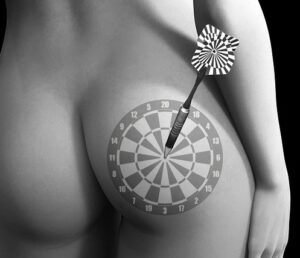
Recently, a reader asked me, “How do you write a story with the end in mind? How do you know what the end is before it’s written?”
He was responding to a blog post in which I wrote about using constraints to spark creativity. One of the points I made was:
“Writing with the end in mind applies especially to writing memoirs. When you first apply a life lesson, a theme, a psychological or theoretical point to the memoir as its raison d’être, you don’t need to think about everything that doesn’t fit the point.
“But if you don’t know what the point is to begin with, then you have a problem. You end up throwing in everything but the kitchen sink, leaving the reader confused and mildly annoyed that you wasted his time.
“So cut anything that doesn’t fit the theme or point of the story.”
So How Do You Start?
In response to my reader’s question, I’ve created a downloadable PDF Cheat Sheet for you. The cheat sheet breaks this process down into an easy-to-follow framework, which will help you write with more power and impact. It’s meant primarily for blog posts, articles and essays, but the basic principles are the same for narrative non-fiction and even fictional scene construction.
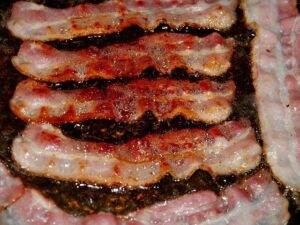
Just for fun, the example I used in the Cheat Sheet is “A Short History of Bacon, or, Why I Became An Unrepentant Bacon Addict”.
This framework can be an extremely useful starting point for any article, blog post, short memoir or narrative non-fiction. A good structure is essential for non-fiction and fiction alike. I think I originally learned the basics of this one from Jeff Goins, but I’ve adapted it to my own uses and voice over time. You can always leave room for innovation and personal style. It shouldn’t be carved in stone, but it’s a good place to start.
This method gives you a solid structural skeleton on which to hang your article because it points out what you want to say to the reader and what you want the reader to do as a result, and it does so in a logical progression of steps that inexorably lead the reader to your conclusion and call to action.
Title or Headline

The first thing the reader sees is your headline or title. The headline needs to grab the reader’s attention. It encapsulates the entire concept — the whole point of the post, article or short story. Which means it’s often written last, after you, the writer, fully understand the point of your article.
More than that, it needs to appeal to your ideal reader, and it needs to eliminate anyone who isn’t interested in your topic. You can’t write for “everyone”.
For example, if your ideal reader is a vegan, a headline like “25 Great Bacon Recipes” isn’t going to reach them. Your headline must be specific to a very particular niche audience. It’s critical that you know who those people are so you can speak to them about their concerns. not the concerns of all the other people who don’t care about this specific topic.
And it’s just one of your target audience’s concerns that the article’s all about. Specificity is key. You need to narrow down your topic to fit both your target audience as well as the theme of your particular article. A single main idea, no more.
Topic vs. Theme
So what is the theme, anyway? In the case of the cheat sheet example, the topic is about bacon. But that’s not the theme. Bacon is just a vehicle for conveying the theme.
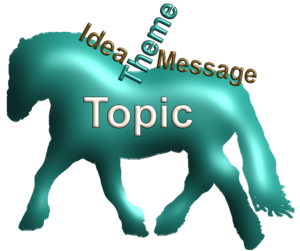 The theme is the point you want to make, the idea you want to get across. In the case of the bacon article, it’s the idea that even when something isn’t good for us, we’ll do it anyway. Acting against our own best interests is a universal human theme, failing or experience, (hence the term “Unrepentant” in the title).
The theme is the point you want to make, the idea you want to get across. In the case of the bacon article, it’s the idea that even when something isn’t good for us, we’ll do it anyway. Acting against our own best interests is a universal human theme, failing or experience, (hence the term “Unrepentant” in the title).
The theme is the abstract idea, overarching question or universal truth that underlies the whole article, and it’s the conclusion you need to be aware of while you write, so you’re always heading towards it. It’s your final destination.
As you formulate more ideas, your theme will become clearer, but it’s important to have a rough idea of your conclusion in mind right from the start.
Otherwise, you’ll wander from point to point, eventually running out of steam, petering out to an unsatisfactory conclusion only when you can’t think of anything more to say on the subject.
Start with the End – Your Final Statement
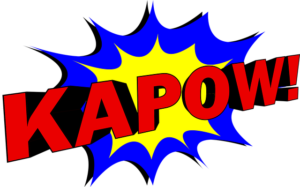
One great way to stay on track is to begin with the final statement — your clincher sentence. This is the final point that reiterates the point made by the headline – not unlike the Worm Ourobouros devouring his own tail. Later on, you can change it and make it more powerful, but if you start off with a single conclusive statement in mind, it becomes a lot easier to get there. It’s your article’s built-in GPS system.
The clincher is a short, sweet, punchline or sound bite that packs a wallop and drives the point home.
- What is the message you want to convey?
- What is the question you want to answer?
- What problem do you help your reader solve?
- What is your key tip, trick or method?
- What do you want them to do? or…
- How do you want them to change?
You can wrap it up with a phrase like, “and that is why”, or “remember”, “in conclusion”, or it may be a short summary of the point you want to make, or a call to action for the reader — some action you want them to take, but it must put a full stop to the end of the thematic concept, and it must be memorable.
The Muddy Middle

The rest of the article is a series of paragraphs that explore different points, aspects and ramifications of the main theme.
The first sentence of the first paragraph should hook the reader and pull them into the argument.
Specify your avatar (your ideal reader) by identifying a particular problem, question or challenge which they struggle with. Then go on and expand on that challenge in the paragraph, ultimately transitioning smoothly and inevitably into the first sentence of the next paragraph, which addresses the question and then poses another. The main thematic question can be acknowledged in paragraph two but not answered, so you can maintain your reader’s curiosity and interest.
This pattern of question and answer in each paragraph continues until you reach the conclusion. You may have more or fewer than five paragraphs, but keep it as short and tight as you can. Here is the basic pattern:
- Headline (hooks the avatar, encapsulates the point).
- First paragraph (asks main question, establishes theme).
- Second paragraph (refers to first question, asks another).
- Third paragraph (answers second question, asks another).
- Fourth paragraph (answers third question, asks another).
- Fifth paragraph (answers overarching main/theme question).
- Final sentence (clincher or punchline, short, sweet, powerful and memorable, drives home the point).
Finally, look for ways you can pare down your article to its leanest, most impactful iteration. Ruthlessly cut anything that wanders off-point.
And there you have it — How to begin with the end in mind.
![]()
P.S. For the structural outline on how to put it all together, CLICK HERE to download my cheat sheet framework for short story, memoir, essay, blog post and/or magazine article.
![]()
P.S. If you’re feeling brave and you’d like to submit your article or essay, FanStory has a Non-fiction writing contest, deadline Sep 11, 2021.
They’re looking for personal essays, memoirs, and works of literary non-fiction on any topic. It doesn’t matter if it’s spiritual, political, intellectual, emotional, funny, serious, or an essay about your DVD player.
One entry per person. Non-Fiction only. New entries only. No Poetry. Minimum length 500 words. Maximum Length 7,000 words. Recommended length 2,000 – 3,500 words.
The winner takes away a $100 cash prize. All writers will receive feedback for their submission.
Happy Writing!

P.P.P.S. If you enjoyed this article, please leave me a comment below, or send me an email at: bev@scribblersguild.com. I’d love to know if this works for you.
Beverley Hanna
Trained as an artist in the late 1960’s and early 1970’s, I was one of the first creatives to be employed in the computer graphics industry in Toronto during the early 1980’s. For several years, I exhibited my animal portraiture in Canada and the U.S. but when my parents needed care, I began writing as a way to stay close to them. I’ve been writing ever since. I run a highly successful local writer’s circle, teaching the craft and techniques of good writing. Many of my students have gone on to publish works of their own. I create courses aimed at seniors who wish to write memoirs, with a focus on the psychology of creatives and the alleviation of procrastination and writer's block.
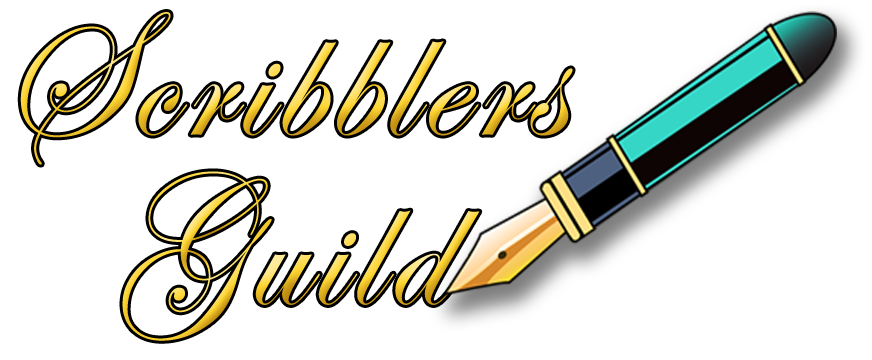
2 Comments
Pingback:
Pingback: